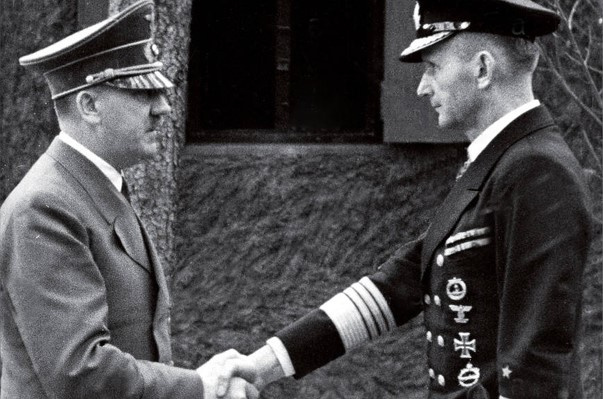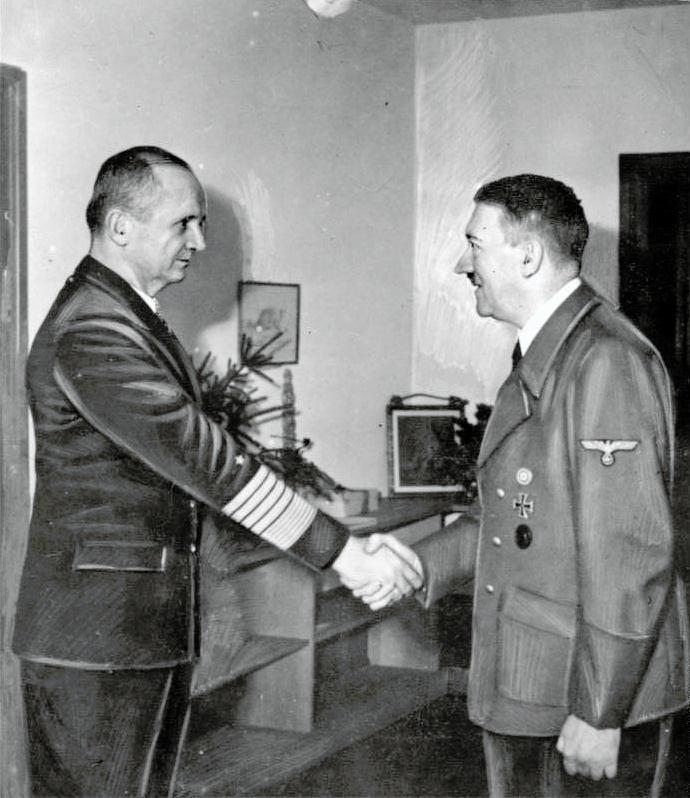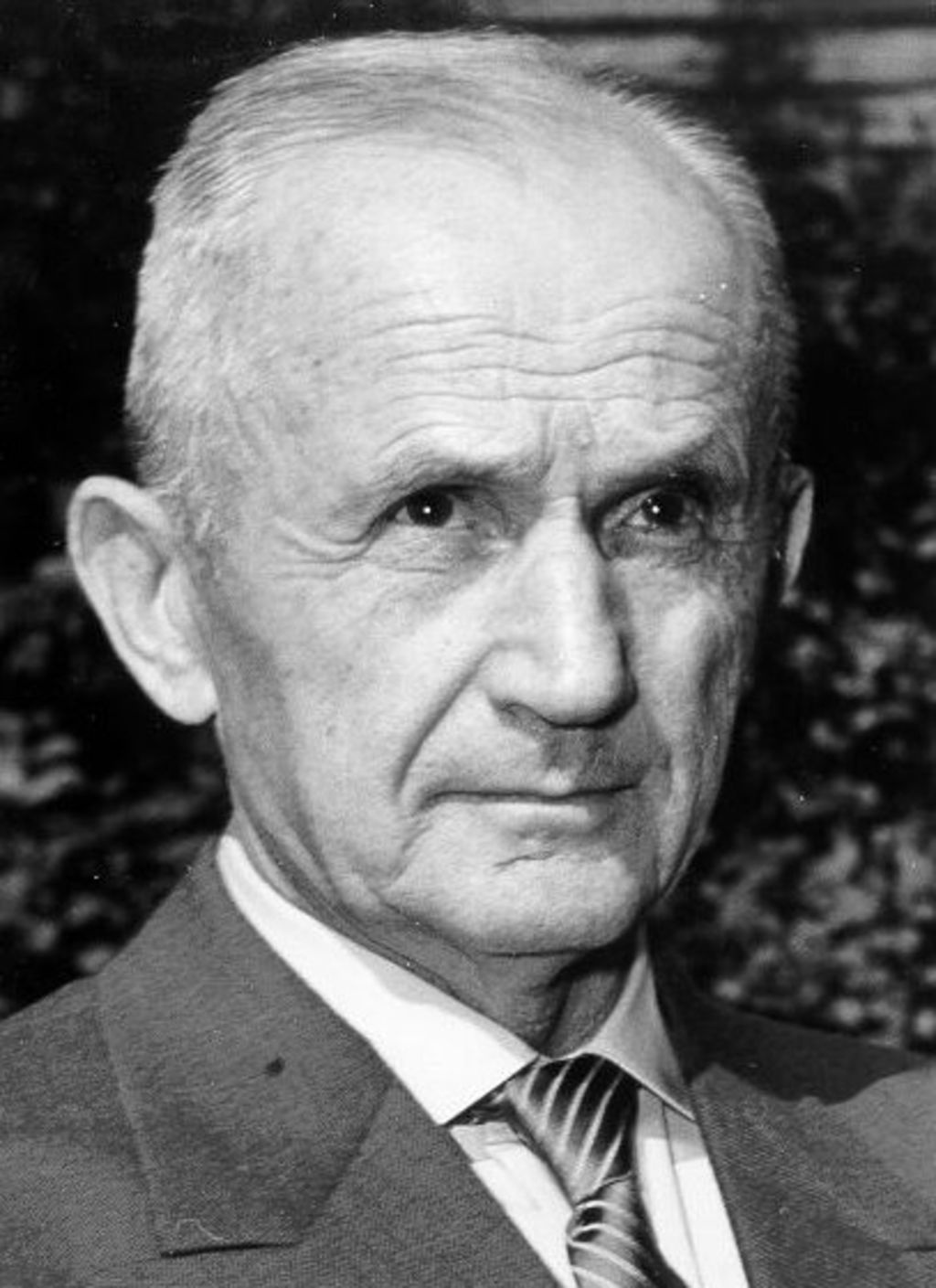

Birth and World War One
Karl Dönitz was born on 16 September 1891 in the German town of Grünau. Sometimes his surname is written as Doenitz. He joined the Kaiserliche Marine (the Imperial German Navy) at the age of 19 years. At the start of World War One he sailed on a light cruiser named Breslau in the Mediterranean. Evading a French / British Royal Navy sea chase the Breslau and Battlecruiser Goeben fled to the harbor of Constantinople in Turkey. Germany sold the ships to Turkey and Karl Dönitz sailed under the Turkish flag in the Black Sea, the Breslau saw action against the Russian fleet.
At his own request Karl Dönitz was transferred to the U-boat flotilla in Germany and was sent to U-boat and torpedo training for a year while being a Watch Officer on the SM U-39. The SM U-39 was a type U 31 U-boat. He married in the same year and in 1917 became commander of the SM U-39, in 1918 he was given command of the Minelaying submarine SM UC-25. With the SM UC-25 he slipped in the Italian port of Augusta and sank an Italian coal ship but missed his target, the British supply ship Cyclops. Dönitz was giving command of the larger SM UB-68 ocean going submarine which was severely damaged and incapacitated in the Mediterranean during an attack on a British convoy. While abandoning ship Karl Dönitz and his crew were taken prisoner. He used his time during his imprisonment to learn Spanish. In 1919, after the war ended, he was set free and returned to Germany, to his wife and daughter.

Interbellum
During the Interbellum, the period between both world wars, Karl Dönitz remained in the German Kriegsmarine. He was commander on a torpedo boat in the Baltic Sea. By 1935 he was Commander of the Cruiser Emden. During the Interbellum Germany was not allowed to have submarines in their fleet. This changed in 1935 when the British reinstalled the right to use submarines in the German Kreigsmarine and Karl Dönitz received orders from General Admiral Raeder to rebuild the U-boot fleet.
In this period Karl Dönitz was promoted from Frigate Captain to Chief of the Submarine Flotilla Weddigen, to Captain, to Leader of the Submarines. During the Spanish civil war the German Airforce – Condor legion, was active in Spain. Recent discoveries show that U-boats under Karl Dönitz’s command were active in Spanish waters as well.

World War Two
One month after the outbreak of war Karl Dönitz was promoted to “Rear Admiral” on 1 October 1939. During the Interbellum he studied British Naval strength and concluded he needed 300 submarines to make a difference at sea. At the start of World War Two he had only 57 submarines at his disposal spread over the Mediterranean Sea, the Atlantic Ocean and a few German ports. This small force had success which led to the promotion for Karl Dönitz to Vice Admiral. On 1 March 1939 the decision was made to build another 249 submarines, the beginning of the Battle for the Atlantic which would be the longest ongoing campaign in the Second World War. Karl Dönitz had his crews trained to fight against shipping convoys with a massing of U-Boats, this tactic was named Rudeltaktik, the Wolf Pack tactics. In 1942 Dönitz was promoted to Admiral.

Unternehmen Paukenschlag – Operation Drumbeat.
Karl Dönitz ordered his submarines to the North American coast and attack the enemy in its own water. Unaware and in disbelief, the U.S. and British started to lose ships, tankers and supply ships at a high rate. The cities and ship weren’t darkened and were an easy target during night time when the ship’s outline was easily spotted against the city lights. At first five U-boats type IX, long range submarines, were sent to America, Canada, Mexico and the Caribbean. These five submarines sank 23 vessels from half January until the end of January 1942. In total 62 Allied vessels were sunk during unternehmen Paukenschlag, Operation Drumbeat. The operation went on until June 1942 in three waves with a diversity of German submarines. By then Unternehmen Paukenschlag was extended to the Caribbean and Mexico. The German Kriegsmarine lost 15 submarines in Operation Drumbeat, one of them is described on LandmarkScout, it is the U-166.

Breaking the code on the Enigma code machine gave the U-boats a huge disadvantage and cost them dearly. When the Germans changed the code during the war, successes increased for a few months until the code was broken again. During the entire war the Germans built 1162 submarines of different types. Types like the VII C U-995, the IX U-166, the XXI U-2540 Wilhelm Bauer, beside ocean going or coastal submarines there was a diversity of midget submarines.
785 were destroyed during the war, 377 were scuttled or surrendered. A memorial on lost U-Boat crews can be seen at Mormont. 30.000 names are engraved in a memorial wall. Close by is a Memorial on the Kriegsmarine near Laboe and a Museum U-Boot U-955 type VII C

Karl Dönitz, the Löwe, promoted to Großadmiral
After General Admiral Raeder resigned his post in January 1943 Karl Dönitz was promoted to Großadmiral on 30 January 1943. Großadmiral or Grand Admiral is the Kriegsmarine equivalent of Field Marshal. Dönitz’s nickname during World War Two was the Löwe, the Lion.
During Operation Overlord, D-Day, Karl Dönitz gave a suicide order for the U-boats in the area. The submarine crews had to take out targets even if it meant to lose their ship.

Karl Dönitz – The last Führer
Karl Dönitz met Adolf Hitler for the last time on his birthday on 20 April 1945. He was ordered to set up defenses for the northern part of Germany. Without knowing Karl Dönitz was appointed by Adolf Hitler as successor in his testament on 29 April 1945, both Herman Göring and Heinrich Himmler fell out of grace in the last moments of the war. When Adolf Hitler committed suicide on 30 April 1945 in his Führerbunker in Berlin it was kept quiet at first. During the evening the secretary of Martin Bormann sent out a radio message to Dönitz to inform him of being the next leader of Germany, the new Führer. A messenger was sent out with the testament but it never reached Karl Dönitz in the mayhem of war.
Goebbels was appointed as the new Reichs Chancellor but committed suicide as well, with his entire family including his six childeren. Martin Bormann, the new NSDAP Party Minister, left the Hitler Bunker and did not survive the heavy fighting around the Führer bunker. The Austrian Seyss-inquart had to become the new minister of Foreign affairs.


Flensburg Government and arrest
The same evening Dönitz told the world that Adolf Hitler had died and he set up a new government in the north German town of Flensburg, the Flensburg Government. There was nothing to be rescued anymore for Germany and surrender was a fact on the night from 8 to 9 May 1945. The Flensburg Government kept on going for a few weeks more in the hope to help the German Soldiers and Civilians towards peace in a humane way. It was disbanded on 23 May 1945 and the last remaining leaders were arrested. They were brought over to the Ashcan, the Palace Hotel in Luxembourg where others like Herman Göring were taken before. After the war Karl Dönitz was sentenced to 10 years imprisonment during the Nazi trials in Nuremberg. He was detained in the Spandau Prison with deputy Führer Rudolf Hess, minister of armament and war production Albert Speer, former Grand Admiral Erich Reader, Reichs minister of economic affairs Walther Funk, foreign minister of Germany Konstatin von Neurath and former head of the Hitler Youth and gauleiter of Vienna Baldur von Schirach.




Karl Dönitz death
Karl Dönitz served his entire sentence of 10 years. After his release he lived with his wife and daughter in Aumühle Germany until his death. He lost both his sons during the war, Peter Dönitz, Ensign in the Kriegsmarine, on 19 May 1943 together with the entire crew of U-boot U-954 and his other son Klaus Dönitz Oberleutnant on a Schnellboot, a fast attack boot, on 13 May 1944. He wrote several books on his life and experiences during the Second World War.
Karl Dönitz died at age 89 in 1980 and is buried at the Waldfriedhof Aumühle in Aumühle – Germany.










Visit
Waldfriedhof Aumühle, or Forrest Cemetery Aumühle is free to visit during daytime hours, The Dönitz family site can be found in Field L5.
If you like to read more on the Kriegsmarine, the German U-Boats or see the different types of submarines follow this link.